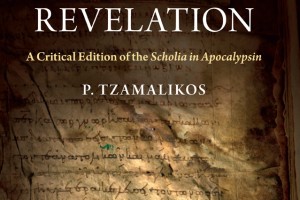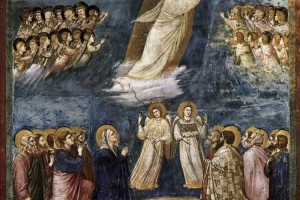Since my thesis topic has me flipping through dozens of Luke commentaries each week, I thought I’d write a post on which commentaries are most helpful to me and why.
Commentaries have five basic jobs: (1) give the reader a better historical understanding of the world in which the text was produced and (2) in which the first audiences resided; (3) interact substantially with the original text; (4) give some details on how the text might apply to modern readers; (5) summarize previous scholarship while simultaneously adding something new. How they go about answering these questions differs from series to series. Some are more theological, others are more linguistically inclined, and still others more historical in nature. All have their place (well, maybe not all). I’m going to recommend the commentaries I keep going back to. I’ve categorized them entirely subjectively, but hopefully the categories are helpful.
Traditional/Historical-Critical
These commentaries are very interested in giving the reader tools with which they might understand better the context of Luke himself and his audience. They are probably the most commonly consulted as well, so I want to give more attention to this category than the others. In order, I recommend:
- Michael Wolter. The Gospel According to Luke. 2 Volumes. Translated by Wayne Coppins and Christoph Heilig. Waco: Baylor University Press, 2016-17.
- John Nolland. Luke. Volumes 35A-C in Word Biblical Commentary Series. Dallas: Word, 1989-93.
- François Bovon. Luke. Volumes 1-3 in Hermeneia Series. Minneapolis: Fortress, 2002-13.
Wolter is not afraid to deviate from prior scholarship if he disagrees. For instance, he strongly disagrees (rightly in my view) that the robe, ring, and sandals that the Prodigal son receives are in anyway comparable to other stories, like Gen 41:42, in which people get robes and rings as a symbol for royal authority:
The instructions of the father have nothing to do with Gen. 41:42, Jubilees 40:7, 1 Macc. 6:15, Josephus, AJ 12.360, which are repeatedly mentioned regarding this passage. For not only do these texts make no mention of shoes, but the concern [in these texts listed] is always with the conferment of a certain task or with the appointment to an office. There is no indication of this at all in the Lukan narrative.
Though this may seem fairly obvious, such an interpretation goes against major scholars like Kenneth Bailey, I. Howard Marshall, Joachim Jeremias, Arland Hultgren, Bernard Heininger, Greg Forbes, and François Bovon. Wolter’s statement is refreshing because the referenced texts were read and critically examined, unlike so many commentaries which simply cite these references and move on. Nolland and Green have similar positions, in that they do not see those texts in the Prodigal Son, but see Esth. 6:6-11 as a better example. Wolter would still have none of that, I’m sure!
It should also be said that the English translation of Wolter’s commentary is very good. I wish the formatting was easier on the eyes, but it mirrors the German version almost exactly which I’m sure was the point.
John Nolland’s Luke commentary had an uphill battle to fight for my attention as it is getting older. When I approached a passage, I would consult all the shiny new commentaries first. And nearly every time when I was frustrated that scholars simply quoted previous scholars, I turned to Nolland and found an excellent discussion on the topic without simply rehearsing the topic.
Bovon’s commentary gives more weight to the history of interpretation. His commentaries are excellent for seeing the text’s interpretive challenges and how those challenges have been addressed throughout history. For example, in his history of scholarship section for the Prodigal Son, he traces the interpretation of the parable including the Valentinians, the Venerable Bede, the Reformation writers, Voltaire and the Enlightenment, and visual art including paintings, plays, and sculptures.
If you are building a library or find them cheap online, both Joseph Fitzmyer and I. Howard Marshall’s commentaries withstand the test of time in places, but they are dated. C. F. Evan’s commentary on Luke makes many contributions to scholarship as well, but is limited in its depth (probably due to its page count limitations). Still, Fitzmyer and Marshall’s shadow still falls over most modern Lukan scholarship, and it would be difficult not to consult them eventually.
Narrative
- Joel Green. Luke. NICNT. Grand Rapids: Eerdmans, 1997.
For me, there is really only one commentary worth noting in this category. Joel Green’s commentary is still the reference point for narrative criticism in Luke, and it is unlikely to be surpassed any time soon. Green’s commentary is a masterpiece in narrative criticism. If I had to nitpick, I might say his method limits just how much detailed attention he can give to backgrounds of Luke’s audience (e.g., house churches, socio-economic demographics, etc), but Green’s work is still top-notch quality and worth getting.
All-arounder
- Mikeal Parsons. Luke. Paideia. Grand Rapids: Baker, 2015.
Parsons has the distinct ability add something very new and interesting to Lukan scholarship on passages, like the Prodigal Son, where commentators typically rehearse the same arguments with the same conclusions. For example, Parsons uses Greco-Roman rhetoric to show that the father is the main character in the story. Seeing the father as the main character, the point of the parable becomes clearer for Parsons (Luke, 242):
The parable subverts the ‘rejected elder son’ theme that demands that one be chosen and the other rejected. Both are chosen. Both sons have sinned; yet both sons are rewarded… The father abandons his honorable role as patriarch and shameless embraces both sons…
Parsons has been doing various Greco-Roman rhetoric analyses of Luke in other works, but this commentary is an excellent summary of his method doing some heavy-lifting exegesis. If you need a great commentary for Luke with good scholarship history and new additions to scholarship, Parsons’ commentary is a great choice.
As an aside, I must say that I have been very impressed with the Paideia series in general. Parsons’ commentary joins Pheme Perkins’ 1 Corinthians and Peter Oakes’ Galatians as very affordable works (all under $20 on Amazon, some as low as $10) with world-class scholarship which in some cases breaks a lot of ground. If the other Paideia commentaries are similar, this may very well become one of the first commentary series I consult.
Theological
- Fred Craddock. Luke. Interpretation. 1990.
It is difficult to put one’s finger on a theological commentary, since all commentaries discuss theology of some sort. Personally, I do not like books with the titles like The Theology of Luke, because Luke wrote a story and not a theological treatise. In my opinion, it is better to look at Luke’s text as a narrative to real people who are not us to understand his theology. But Luke certainly had theological aims, and so do preachers and teachers. Theological commentaries usually move past debates about authorship, dates, and redaction to focus on how one might read/teach/preach Luke today.
Preachers who are trained in Greek/Hebrew will find Nolland and Green very helpful. Parsons is equally good, easier to read, and gives theological applications which are insightful and helpful. For those who are not trained, they will find world-class scholarship in Craddock’s commentary.
In my mind, Fred Craddock’s Luke commentary is unlikely to be surpassed in my lifetime. He gives just enough historical detail to give the preacher some background but not enough to overwhelm. Take, for example, his comments on Luke 14:7-11 in which a Pharisee hosts Jesus (Luke, 176):
The everyday activity of home and marketplace, farm and fishing boat provided Jesus not only revelations of the true character of his listeners but also opportunities to reveal the way life is in the reign of God. Plutarch once observed that it is in the small, apparently trivial act that character is most accurately reflected. The observations of Jesus support that statement. And if the incarnation teaches us anything, it is that the frequent and the familiar are not to be overlooked in defining life in the presence of God.
In one small paragraph, he has introduced (1) the narrative setting of the parable, (2) popular Greco-Roman moral formation during Luke’s audience’s lifetime, (3) Jesus’ mission analyzed within a Greco-Roman setting. He then ties his analysis together with a Christological statement which, in turn, teaches us something about being Christians. Such commentaries are rare, and Craddock’s should be consulted regularly.
Conclusion
In my opinion, the above works are the best English commentaries on Luke at the moment. You’ll be at the top of your commentary game if you manage to buy all of the above works.
Some readers will probably notice some well-known commentaries are absent. Luke Timothy Johnson’s commentary has excellent insights, but leaves many concerns unaddressed which the above commentaries do address (I still have it on my desk because it has an excellent bent towards wealth, social ethics, and possessions in Luke). James Edwards’ Pillar commentary adds little to scholarship. Most of all, I’m sorry to say that I have not found Bock’s 2 volume Luke commentary (BECNT) helpful or insightful. It seems very interested in defending modern conservative theological positions and especially with rebutting the Jesus seminar. While that may have been at the forefront of scholarship concerns at the time, this narrow focus has caused it to age poorly.





3 Comments
Leave your reply.